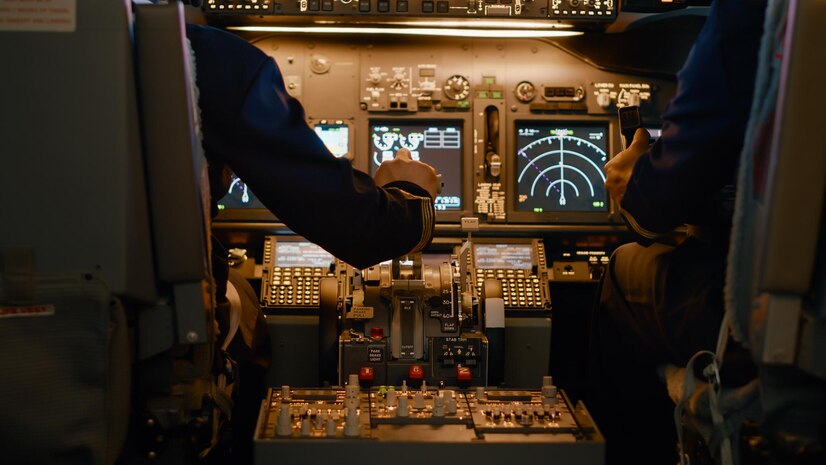Introduction
In the bustling world of aviation, where safety and efficiency are paramount, air traffic controllers play a vital role. These unsung heroes ensure that each flight departs and arrives without incident, orchestrating the complex dance of aircraft in the sky. Among these dedicated professionals is Adam Gillespie, an air traffic controller whose expertise keeps our skies safe. This blog explores Gillespie’s world, offering insights into his career, daily challenges, technological impacts, and future aspirations in the field of air traffic control.
Who is Adam Gillespie?
Adam Gillespie has become a notable figure in air traffic control, known for his precision and commitment to safety. His career began with a passion for aviation and a desire to contribute to a sector that affects millions of lives daily. After completing rigorous training, Gillespie quickly established himself as a reliable air traffic controller, earning accolades for his ability to manage high-pressure situations with calm and efficiency. This background sets the stage for understanding the depth of responsibility carried by air traffic controllers like Gillespie.
Gillespie’s career path wasn’t just about mastering technical skills; it involved cultivating a mindset attuned to constant vigilance and adaptability. He honed his abilities through a blend of formal education and hands-on experience, often working alongside seasoned professionals who imparted invaluable lessons. His dedication to continuous learning has not only advanced his career but also set a standard for excellence that peers in the industry admire.
Beyond his professional achievements, Gillespie is also dedicated to mentoring the next generation of air traffic controllers. By sharing insights and experiences, he helps aspiring controllers prepare for the challenges they will face, ensuring that the skies remain safely navigated for years to come.
A Day in the Life of an Air Traffic Controller
The life of an air traffic controller is far from routine. Each day presents a new set of challenges that require focus, quick thinking, and meticulous decision-making. Gillespie starts his day by reviewing the schedule and weather conditions, ensuring he’s prepared for any potential disruptions. Monitoring radar screens, he maintains constant communication with pilots, providing crucial information to guide them safely through the airspace.
Handling unexpected situations is a core aspect of Gillespie’s role. Whether it’s a sudden change in weather or an aircraft needing emergency assistance, he must remain composed and decisive. The ability to think on his feet while managing multiple tasks is essential, as even the slightest oversight can have significant consequences.
Despite the high stakes, Gillespie finds immense satisfaction in his work. The successful coordination of flights and the knowledge that he’s contributing to passenger safety provide a sense of fulfillment that few other professions offer. It’s this blend of responsibility and reward that keeps him passionate about his role, even on the most demanding days.
Technological Advancements in Air Traffic Control
The advent of technology has transformed many aspects of air traffic control, introducing tools that enhance both safety and efficiency. For Gillespie, these advancements have been instrumental in refining his work processes. Modern radar systems, real-time data analytics, and automated alerts provide the support needed to manage increasingly crowded airspaces.
Gillespie embraces these technologies, recognizing their role in reducing the margin for human error. Automated systems assist in tracking aircraft trajectories and predicting potential conflicts, allowing controllers to focus on strategic decision-making. This synergy between human expertise and technology is crucial for maintaining the high standards of safety expected in aviation.

However, the integration of technology also brings challenges. Gillespie emphasizes the importance of staying current with new developments and continuously updating skills to leverage these tools effectively. The dynamic nature of the field demands a proactive approach to learning, ensuring controllers can adapt to and benefit from technological innovations.
The Future of Air Traffic Control
Looking ahead, Gillespie envisions a future where air traffic control is even more integrated with advanced technologies. Developments in artificial intelligence and machine learning hold the potential to further streamline operations, predict traffic patterns, and optimize resource allocation. Gillespie is optimistic about these changes, seeing them as opportunities to enhance safety and efficiency globally.
In this evolving landscape, Gillespie sees himself playing an integral role, not just as a controller but as a mentor and innovator. His experience and forward-thinking approach position him well to contribute to shaping industry standards and training methods that incorporate new technologies. By fostering a culture of innovation, Gillespie aims to ensure that air traffic control continues to advance alongside the aviation industry’s growth.
Advice and Insights for Aspiring Air Traffic Controllers
For those considering a career in air traffic control, Gillespie offers valuable advice based on his extensive experience. He emphasizes the importance of strong communication skills, as clear and concise interactions are crucial for successful coordination between controllers and pilots. Additionally, developing resilience and the ability to remain calm under pressure are key traits that aspiring controllers should cultivate.
Gillespie also highlights the significance of continuous learning. The aviation industry is constantly evolving, and staying informed about new technologies and regulations is vital. He encourages aspiring controllers to seek mentorship opportunities, as learning from experienced professionals can provide insights that textbooks cannot.
Ultimately, Gillespie believes that a genuine passion for aviation and a commitment to safety are the driving forces behind a successful career in air traffic control. With these qualities, aspiring controllers can make meaningful contributions to an industry that plays a pivotal role in connecting the world.
Conclusion
Air traffic controllers like Adam Gillespie are the backbone of aviation, ensuring that millions of passengers reach their destinations safely and efficiently. Their dedication and expertise underscore the critical importance of this profession. As technology continues to evolve, the role of air traffic controllers will undoubtedly change, but the fundamental commitment to safety remains constant.







































